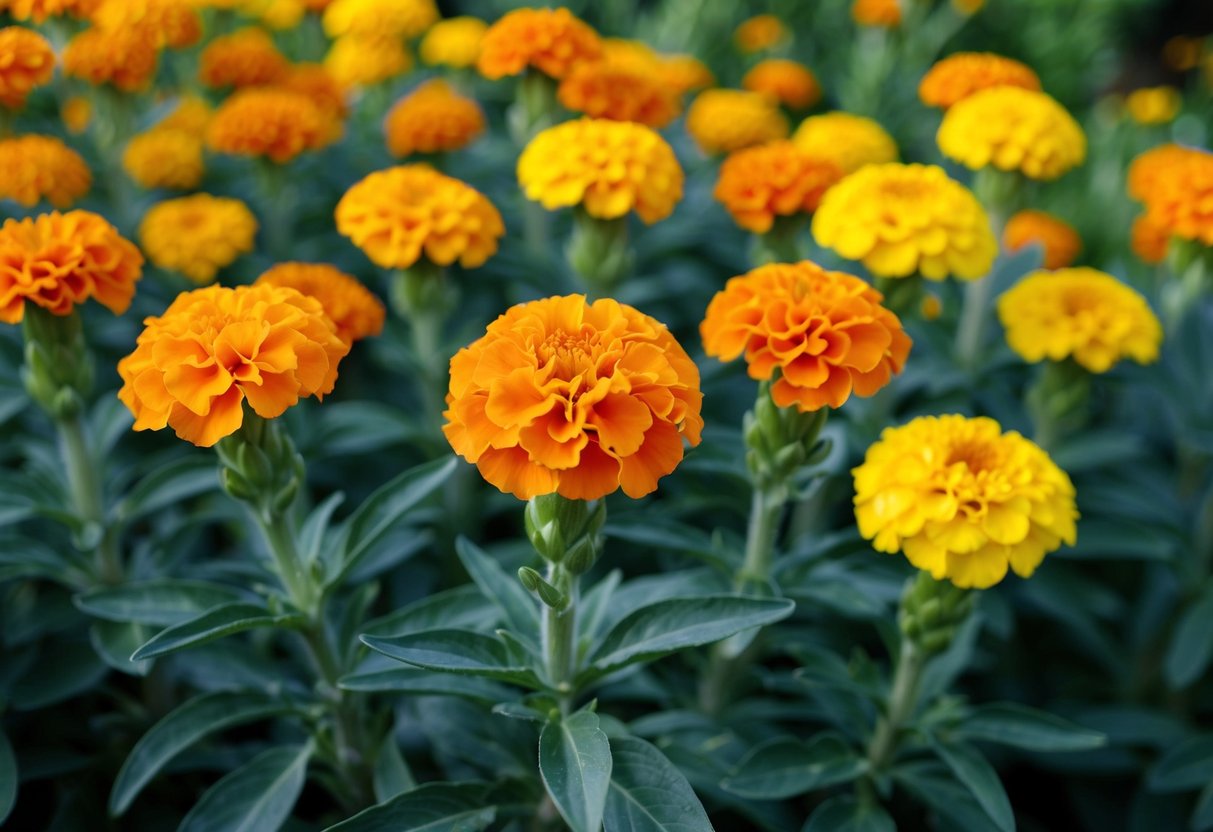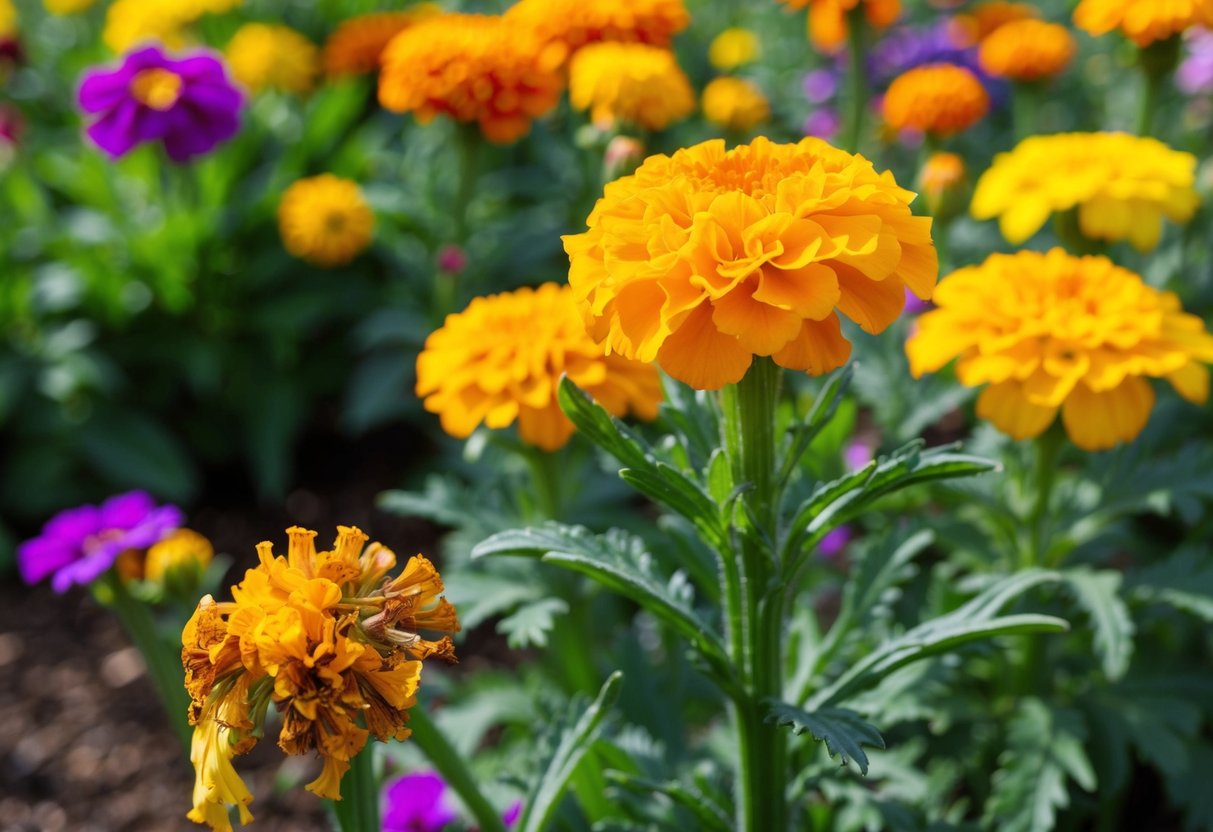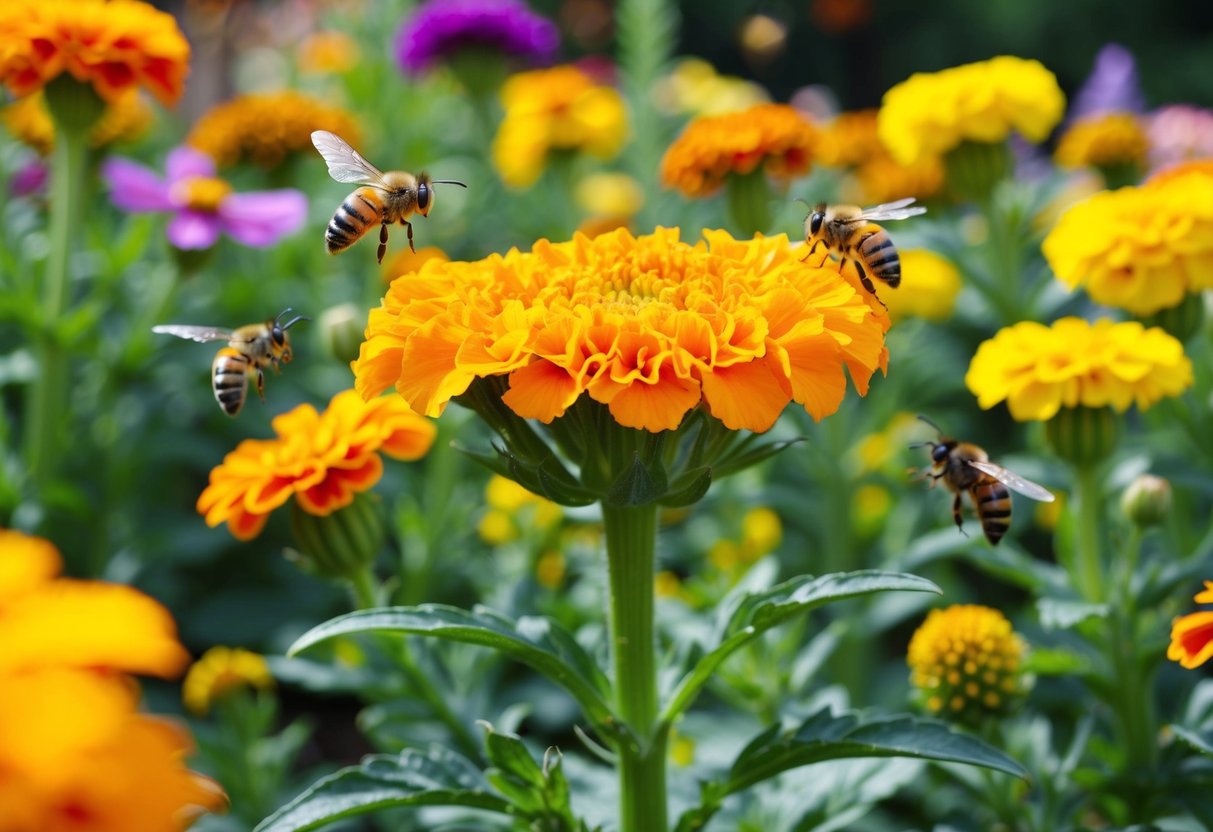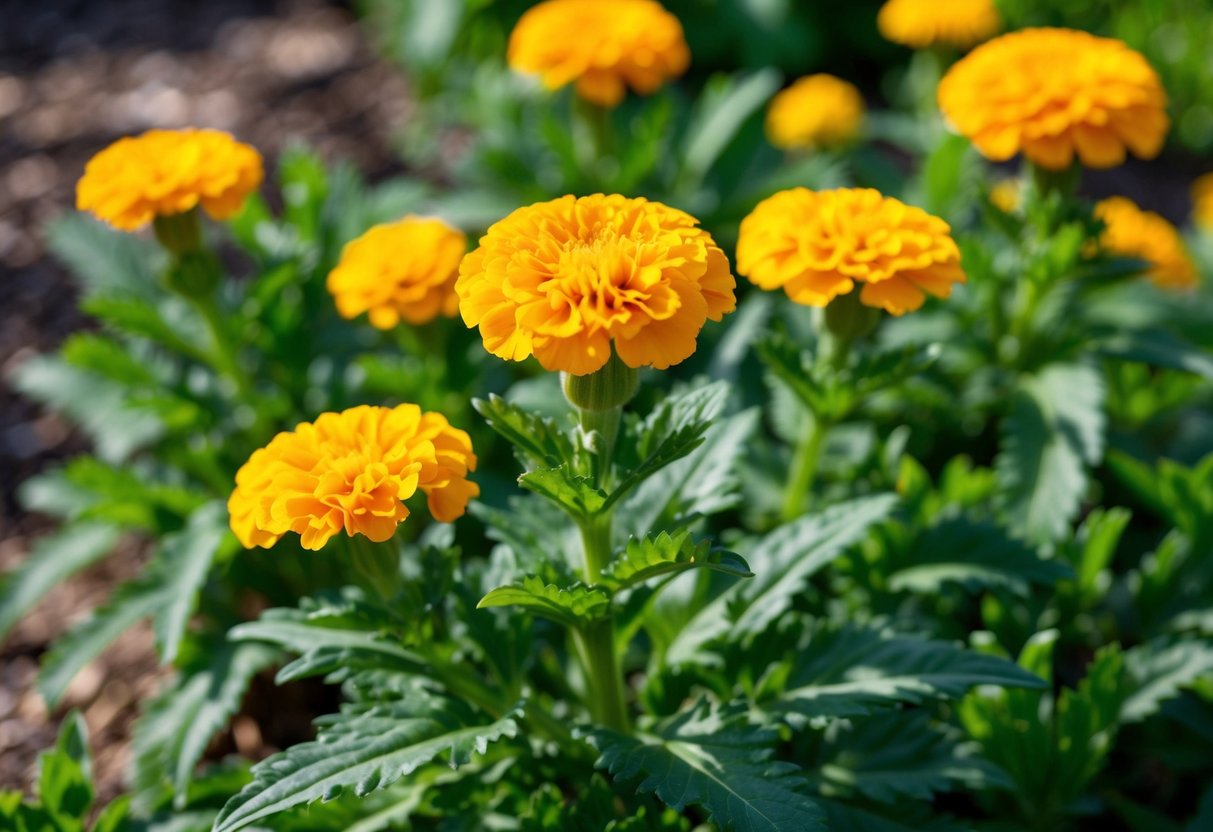Do Marigolds Come Back? A Friendly Guide to Their Growth Cycle
Marigolds are a popular choice for gardens due to their bright colors and easy care. As you plan your garden, you might wonder if these vibrant flowers will return year after year. Marigolds are generally annuals, which means they live for one growing season and don’t come back the next year.

Some marigold varieties have a surprising ability to self-sow. This means they can drop seeds that might sprout in the following spring, giving you new growth without needing to replant. Considering this, marigolds could make a reappearance in your garden, but this isn’t guaranteed.
If you’re hoping to see your marigolds again next year, understanding how to encourage self-sowing can help. Learn about different techniques like cutting the plants at the right time and the proper way to store seeds for the best chance of regrowth.
Understanding Marigolds

Marigolds are diverse and vibrant plants that bring joy to many gardens. You’ll find different types, learn about annual versus perennial growth, and understand their taxonomy.
Types of Marigold
Marigolds are known for their bright, cheerful flowers. The most common types are French marigolds (Tagetes patula), African marigolds (Tagetes erecta), and signet marigolds (Tagetes tenuifolia). Each variety offers something unique.
- French marigolds are smaller with a bushy growth and come in many colors.
- African marigolds have large, pom-pom-like blooms and can grow quite tall.
- Signet marigolds, known for their delicate, lacy foliage, produce small, edible flowers with a spicy taste.
Understanding these marigold varieties can help you choose the best type for your garden’s needs.
Annuals vs. Perennials
Marigolds can be either annual or perennial, affecting how they grow and return each year. Annuals complete their life cycle in one growing season, like French and African marigolds. These varieties bloom through summer until the first frost.
Perennials like the Mexican marigold can come back year after year if grown in the right conditions. Some gardeners love them because they provide continuous blooms over the years without the need for replanting. Knowing whether your marigolds are annual or perennial helps in deciding the care they need throughout the growing season.
Marigold Taxonomy
Understanding marigold taxonomy helps you identify these plants correctly. Marigolds belong to the genus Tagetes, which is part of the family Asteraceae. The genus includes several species, like Tagetes patula, Tagetes erecta, and Tagetes tenuifolia.
The pot marigold, also known as calendula, is not a true marigold but often grouped with them due to similar appearance. Its scientific name is Calendula officinalis. By recognizing these taxonomic differences, you’ll be better equipped to select and care for your marigolds, ensuring a blooming success in your garden.
Cultivation and Care

Marigolds are a popular choice for gardeners because they are low-maintenance and easy to grow. You just need to pay attention to the right soil, watering, and care practices to help them thrive.
Planting and Soil Requirements
When you’re planting marigolds, choosing the right soil is vital. They prefer well-drained soil that isn’t too rich in organic matter. Aim for a pH that’s roughly neutral, around 6.0 to 7.0. If you’re working with garden soil, make sure it’s not too acidic. For marigolds in containers, use a soil-based potting mix to support their growth.
Marigolds self-sow, which means they can drop seeds that might sprout the following spring. This trait can make your planting tasks easier year after year.
Watering and Sunlight Needs
Marigolds need regular watering, especially during dry spells. It’s important to keep the soil consistently moist but not overly wet. This is crucial during their early growing season. Once established, marigolds become fairly drought-tolerant, reducing the frequency of needed watering.
For sunlight, these flowers thrive in full sun. Give them at least six hours of direct light daily. This exposure helps them produce bright and abundant blooms, enhancing your garden’s appearance. If you live in a region with intense sunlight, some afternoon shade can help prevent wilting.
Fertilization and Pruning
Fertilizing marigolds is simple: they need a balanced fertilizer once a month. Too much fertilizer can lead to lush foliage but fewer blooms, so moderation is key. If you notice they aren’t flowering as expected, adjust the fertilizer routine to suit their needs.
Pruning plays an important role in keeping your marigolds looking great. Once the flowers have faded, cut the flower stalks back. This practice encourages new growth and even more blooms throughout the growing season. Regularly removing faded or dead blooms keeps the plant healthy and vibrant.
Reproduction and Lifespan

Marigolds can thrive through various reproductive strategies. Understanding these methods will help you enjoy their vibrant blooms year after year without much hassle.
Germination and Growth
When you grow marigolds from seed, timing is crucial. Plant seeds indoors 6-8 weeks before the last frost date. Marigold seeds are small and need a warm environment to germinate. Keep them in soil temperatures between 70°F to 75°F.
Once they germinate, seedlings will soon appear. Ensure they get plenty of light and water to support their growth. When the risk of frost has passed, plant them outside, spacing around 8-10 inches apart. This allows the roots to spread, promoting healthy plants and abundant flowers.
Self-Seeding Characteristics
Some marigolds have unique self-seeding traits. After flowering, marigolds drop seeds that can sprout in the spring. This happens without any effort on your part, allowing new plants to emerge each year.
While marigolds are mostly annuals, their ability to self-seed helps them reseed naturally in favorable conditions. If you notice new sprouts, consider letting them grow instead of replanting, ensuring you have a garden full of colorful flowers.
Flowering and Bloom Time
Marigolds are known for their long flowering period. After planting, they bloom from late spring through the first frost. These vibrant blooms are not just beautiful; they have a distinct smell that keeps pests away.
To encourage prolonged flowering, deadhead regularly. This means removing withered flowers to stimulate new growth. You’ll enjoy more blooms, and the plant will stay healthy. Whether you’re growing French, African, or Mexican marigolds, their stunning colors and fragrance can brighten any garden space.
Marigold Benefits and Uses

Marigolds are not just beautiful, they also serve practical purposes in your garden. They help keep pests away and attract beneficial insects.
Companion Planting and Pests
Marigolds are great for companion planting. They have a special ability to repel certain pests, like nematodes and whiteflies. Nematodes can damage the roots of your plants, but marigolds release chemicals that keep them away. They are also helpful against aphids and snails. Plant marigolds near vegetables such as tomatoes and peppers for extra protection.
In addition to pests, marigolds can combat diseases like powdery mildew. While they don’t directly cure diseases, their presence helps create a healthier balance in your garden. Plus, marigolds can deter slugs and other common pests.
Attracting Beneficial Insects
Marigolds also attract a variety of beneficial insects, such as pollinators. Pollinators, like bees and butterflies, are essential for plant reproduction. When you plant marigolds, you invite these insects into your garden, which can increase fruit and vegetable yields.
Hoverflies and ladybugs are also drawn to marigolds. These insects prey on aphids and other harmful bugs. By attracting them, you help maintain a natural balance in your garden ecosystem. The bright colors and scent of marigolds make your garden more inviting to these helpful insects, creating a thriving, vibrant space.
General Tips and Tricks

To help your marigolds thrive, focus on maintaining vibrant colors and handle temperature changes effectively. These plants can brighten your garden if you give them the right care and attention.
Maximizing Vibrancy and Health
To achieve vibrant color in your marigolds, deadheading is key. This means regularly removing faded flowers to encourage new blooms. Deadheading keeps the plants focused on producing more flowers instead of seeds.
Consider pruning your marigolds occasionally. Trim back any dead or dying foliage to maintain a neat shape and promote new growth. Fertilize your marigolds with a balanced plant food every few weeks. This gives them the nutrients needed for healthy growth and vibrant flowers.
Plant marigolds in a spot with plenty of sunlight. Full sun exposure for at least 6 hours a day can significantly enhance their color.
Dealing with Climate Variances
Marigolds are generally hardy but thrive in certain temperature ranges. They prefer warm, sunny climates and can handle regions with mild winters. Plant them after the last frost in your area to avoid damage from cold weather.
In hot climates, ensure you water marigolds deeply but infrequently. This helps the roots grow strong and handle periods of heat without wilting.
Understand your hardiness zone to plant marigolds at the best time in your area. If you live in a zone with harsher winters or colder temperatures, consider starting marigolds indoors before moving them outside.
Make sure the soil drains well and doesn’t retain excess moisture, as overly wet conditions can lead to root rot.







